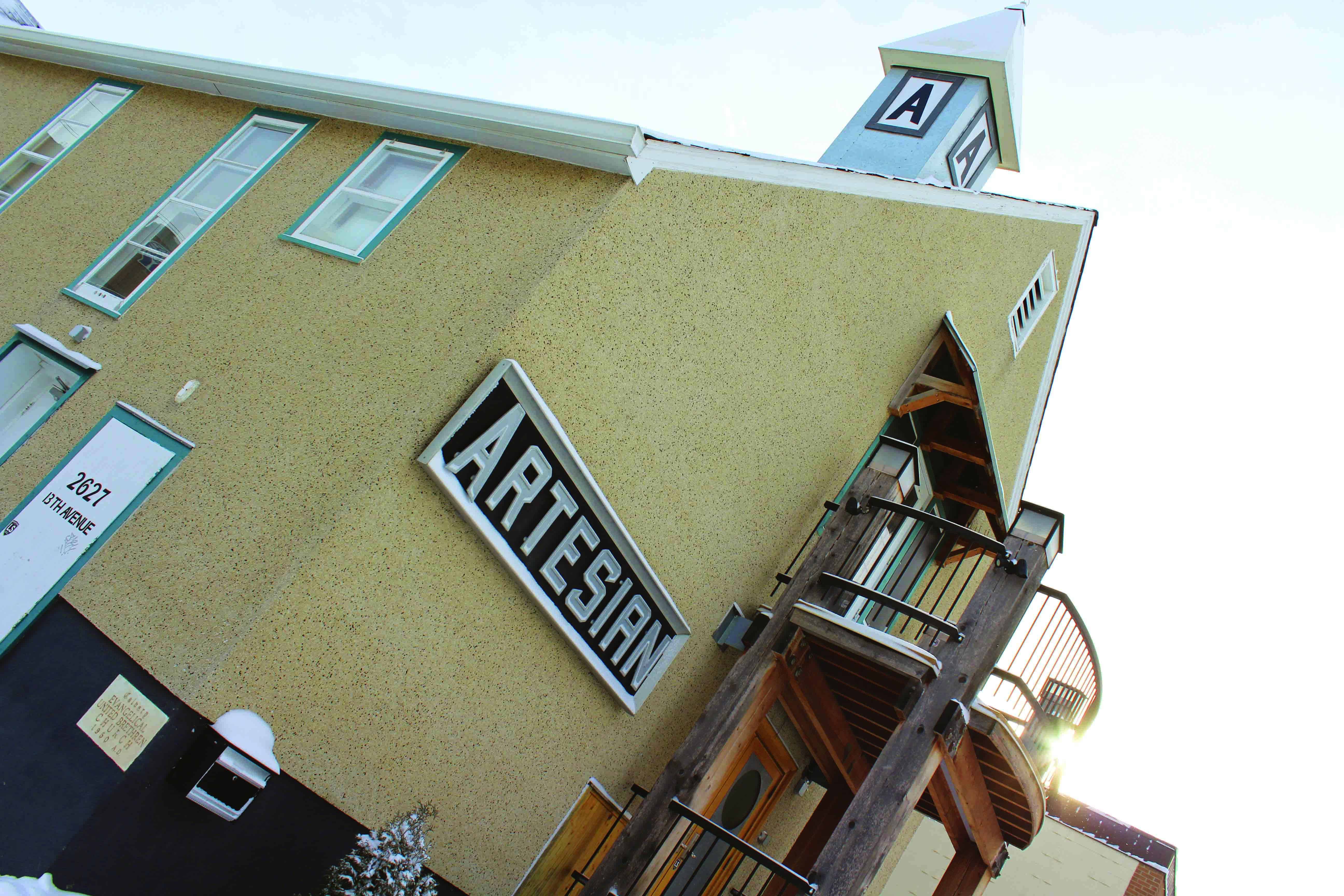The return of the Man in Motion

The U of R honours Rick Hansen and his 25th anniversary relay
Lauren Golosky
News Writer
To say Rick Hansen is the Man in Motion would be an understatement.
After suffering a spinal cord injury that left him restricted to a wheelchair when he was a teenager, Hansen has worked to make the world a better, more accessible, and inclusive place for other people with disabilities – and he’s bungee-jumped with Rick Mercer.
On Monday, Hansen came to the University of Regina as part of his 25th anniversary relay to speak to a full gym. He told stories of his youth, his tour around the world, and other achievements, all while inspiring the students, staff, and general public gathered in the gym to hear him speak. Hansen described the accident that crippled him and the subsequent hurdles and challenges, yet he was impossibly optimistic – a defining characteristic of the Man in Motion.
Few people in attendance were old enough to remember, or were even alive, during Hansen’s original Man in Motion World Tour, yet everybody in attendance knew who he was and what he had done. For U of R president Vianne Timmons, who introduced Hansen at the presentation, he is a special individual. It is clear that she holds a special regard for him.
“I knew Rick when he was in his twenties; I was in my twenties,” Timmons said. “I’ve had the opportunity to follow his career, and I’ve been inspired for the last 30 years by his work.”
In her introduction, Timmons described the many achievements of Hansen, who has received honorary degrees from 14 Canadian universities, including one from the University of Regina. She listed off achievement after achievement, including Canadian Wheelchair Sport Association Outstanding Athlete of the Year in 1980 and the Lou Marsh Canadian Athlete of the Year, which he shared with Wayne Gretzky in 1983.
Yet to Timmons, these are all secondary to the fact that Hansen is now part of the Canadian consciousness.
“What people have to remember are the hours, days, weeks, months that he wheeled on lonely roads, in difficult weather conditions, around the world with a small support team and what amazing determination it was to take his dream and make it a reality,” she explained. “He’s truly the Man in Motion, because you see him everywhere.”
Timmons also credits Hansen, who is both president and CEO of the Rick Hansen Foundation for Spinal Cord Injuries, with developments that have been made in the world for people with disabilities, in terms of accessibility and inclusivity.
“When I look at our university, and the services for people with disabilities, I see the work of Rick and people like him,” she said. “We have a campus for all programs for young men and women with intellectual disabilities who can participate in university life; we have a Centre for Student Accessibility that has assistive technology, policies, and accommodations in classrooms to ensure that people with disabilities can access education here.
“Twenty-five years ago, these were exceptions, rather than the rule, at universities.”
Timmons was a medal bearer in the Rick Hansen relay, which took place in Regina on Saturday. Participating with Timmons was Patty Niebergall from Timmons’ office, as well as several University of Regina students. Timmons said she was honoured to be a part of the relay and hounoured that the university was represented. At Monday’s presentation, she presented Hansen with an original art piece by a U of R Aboriginal artist, as well as a university sweatshirt.
For Hansen, being back in Regina was just as sentimental.
“I’ll never forget the incredible hospitality I received in here [in Regina] 25 years ago wheeling through on my Man in Motion tour,” he said to the audience.
“It’s truly inspiring for me … being here in Regina, once again 25 years later, knowing how much progress has been made in this great community.”
An advocate for athletics, Hansen also believes in the power of a post-secondary education and the institutions it’s housed in.
“University is where ideas, knowledge, and social responsibility and contribution to our community and the world are incubated,” Hansen explained.
Hansen’s attitude about the value of post-secondary education is almost ironic, considering his fight for acceptance into his physical education program at the University of British Columbia in 1976. The result was Hansen being the first person with a physical disability to graduate with a Bachelor of Physical Education.
Through Hansen’s description and recollection of his life, his message rang through. It was optimistic.
“To create a world where people are healthy, living in an inclusive society on a healthy planet,” he said.
“As one man in motion moving forward, as a kid 27 years old, thinking about this relentless dream to wheel around the world, I’m now thinking about leadership … taking those lessons forward, doing whatever I can to make a difference.”









